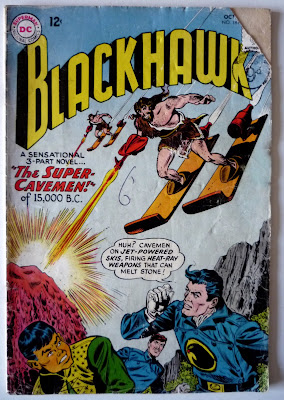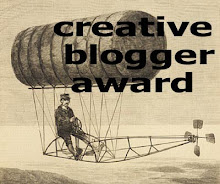


Greetings, chums. If you would be so good as to indulge a mad old man I thought I might mention some undeniably good comics today. I'm rather a fan of vintage 'funny animal' comic books, particularly those that feature Donald Duck written and drawn by 'the good duck artist' Carl Barks or Mickey Mouse drawn by Floyd Gottfredson. But in all the decades of my lonely existence I have never met anybody - in the flesh - who really shares my love of this particularly unsung avenue of the obsolescent, the old and the nerdy. Even friends who like comics - and I have one or two, believe it or not - who, reassured by the recent adult acceptance of superheroes as in some way cuturally valid, would be quite prepared to spend an all-too-rare evening in the pub discussing how many different kinds of kryptonite there are, or whether Super-Horse or Beppo the Super-Monkey was the stupidest idea for a super-animal, nonetheless perceive 'funny animal' comics as infantile, ridiculous, and the most obvious symptom of my antisocial sickness. In fact, they can barely conceal their disdain for me, when, with a nervous laugh, I casually attempt to drop a topic like Super Duck, the lederhosen-clad Donald rip-off of the 1940s (who had a strangely attractive, albeit duck-headed, girlfriend), into the conversation.
So, many years ago, searching for informed discussion and intelligent debate on weighty issues such as this, and when I was younger and even more idiotic than I am now, I joined a Disney comics "discussion group". Super-Duck was not mentioned there, of course (even less people care about him than care about Donald) but I hoped to engage other like-minded fellows in some cheery 'funny-animal' related wrangling on topics of mutual interest. It has to be said that in the main the experience was a grisly one. Many messages had been written by people (all men, of course) who seemed quite clearly to believe that Donald Duck, Uncle Scrooge, et al, were real, and that comic strips about them were little more than transcribed excerpts from their personal biographies; and that if you could manage to ignore the superfluous irritation that these strips contained an entertaining narrative, jokes, and that sort of thing, they might at least contain useful statistical data which would enable you to calculate the exact size of Scrooge McDuck's Money Bin in square feet, or to ascertain in precisely which year he first wore a top-hat. The fact that Carl Barks, writer and illustrator of these tales, had no interest at all in such considerations, meant nothing to the feverishly enthusiastic chaps on the message-board. In addition, in other free moments, when not engaged in such matters as isolating the strictly correct permuations of the convict-numbers written on the fronts of the villainous Beagle Boys' jerseys, many of these chaps would write in the group to tell a more recent writer of Duck strips, also a member of that group, who shall remain nameless, but who is rather highly regarded these days, (perhaps precisely because he is obsessively interested in all that kind of boring fan-boy duck data) how very wonderful he was, and how very wonderful it was that he devoted his valuable time to reading their unworthy messages filled with their glowing praise, lavished upon him endlessly, like a cascade of oily gold. Which, to me, all seemed rather sickening.
Foolish dolt that I am, I could not contain myself. Unwisely, I immediately wrote in to the group with a comment to the effect that I didn't give a stuff how big McDuck's money bin was, and Barks wouldn't have done either; and that I didn't think the new stories could hold much of a candle to the old ones, to boot. After merely being ignored for the preceding years, suddenly I found myself somewhat towards the centre of attention, as I was savagely lambasted for my sacrilege. Suffice to say I did not write in again.
But I digress. What I was trying to say was that I don't get much of a chance to actually share the delights of old Disney comics with anybody, hence I am writing about them here for my massive internet readership. Let me make it clear, I'm being quite specific about this. I don't just like every Disney comic strip, they have to be by the decent writers and artists, who transcended the limitations of writing about characters that, by the 1940s, were already coagulating into corporate ciphers, little more than advertising images for the mass-marketing of American pop-culture. But beneath Uncle Walt's radar, under-paid artists like Barks and Gottfredson were not telling stories of ducks and mice, they were telling stories of hard-up everymen, who just happened to have animal heads. If you've never tried them, you should. I recently picked up a whole batch of early issues of Walt Disney's Comics and Stories from way back in the 1940s, from an ebay seller in the states.
The issues themselves are what you might call a curate's egg. They always get off to a cracking start with a Carl Barks Donald Duck ten-pager (unlike most of the geeks who I upset all those years ago, I prefer Barks' comedy shorts to the long Scrooge adventure tales). The best of Barks' work stands up against anything in American popular literature, I reckon - it is simultaneously funny, sad, bitter, life-affirming, truthful, bizarre, and massively cynical. And somehow, thanks to Mr. Barks, a weird duck in a sailor suit becomes an everyman who can make me laugh. Check out the page below that I have attempted to upload for you in my usual ramshackle way.
This is from Walt Disney's Comics and Stories 89, February 1948. I think this page alone is a work of genius. I believe Barks has included a self-portrait, depicting himself as the battered boxer halfway down the page.
Not only do you get this brilliantly funny "interior monologue" character stuff with great visual gags, Barks also sticks in screwball craziness whenever he feels like it. Having got the job as a night watchman, Donald must attempt to stay awake until he clocks on... hence the following...

Isn't it terrific? A little later he tries a spot of dancing...

For me, the first panel above has more potency than a six-month prescription of antidepressants...
Anyhow, enough about Barks, for now. As well as top-quality stuff like this, you also get filler. Drippy kiddie stuff. There's the tedious slum-dwelling insect Bucky Bug (out of focus, below, like a half remembered nightmare), for example...

Another rule of thumb: Chip 'n' Dale: AVOID AT ALL COSTS. E.g.:
And it's in rhyme. The evil chubby-cheeked little shits. I hope Donald has a rifle.
Instead, spend some time digging Gottfredson's fantastic Mickey Mouse - another highlight of early issues of Walt Disney's Comics and Stories. Take a look at this brilliantly drawn sequence from issue 89, February 1948(written by Bob Karp and Dick Shaw), featuring Goofy's pet lion, Agnes....

And the splendid strip below is from issue 77 (February 1947), and was written by Bill Walsh...a great example of how down-at-heel Mickey (and Donald) were before they got cleaned up and middle-class-ified a few years later...

And the splendid strip below is from issue 77 (February 1947), and was written by Bill Walsh...a great example of how down-at-heel Mickey (and Donald) were before they got cleaned up and middle-class-ified a few years later...
 I love the weird pre-comics code funny-animal world, where it is entirely normal for a libidinous giant mouse, in slacks and a Leo Gorcey hat, to attempt to make some time with a haughty human gal, only to be served with an eviction notice.
I love the weird pre-comics code funny-animal world, where it is entirely normal for a libidinous giant mouse, in slacks and a Leo Gorcey hat, to attempt to make some time with a haughty human gal, only to be served with an eviction notice. The looming spectre of adult sexuality within the 'innocent' funny animal kiddie universe of these years never fails to fascinate me. Which leads me on to another highlight of these comics: short Donald Duck strips (reprinted from newspapers) by Al Taliaferro. His Donald is often tempted away from Daisy by other, more shapely, more human, dames...

Who can blame Donald for winking at that curvy gal, eh? After all, Daisy is a duck! But, erm, hang on a tick - so is Donald. I forgot for a moment. Also, Don seems to be wearing more in the trouser department when he's on the beach than he does at home. I'm confused. As usual.
Don't be afraid. You know you want to try some of this stuff. It's brilliant, really funny, I guarantee it. You just need to get the right stuff, the old stuff, by the good writers and artists. Start with a cheap reprint volume of Barks. And be prepared for the funny looks you'll get if you read this stuff on the bus to work. Perhaps slip your Donald Duck inside your copy of The Economist?
You'll find a growing stack of these comics in THE HOUSE OF COBWEBS.




















